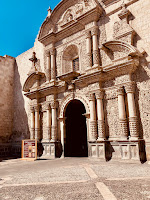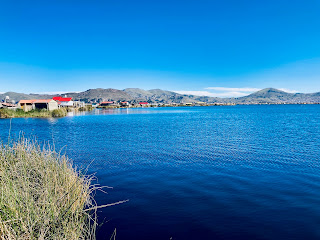Refreshing visit to Huacachina oasis and nearby Pisco winery

Refreshing visit to Huacachina oasis and nearby Pisco winery Huacachina Oasis , near the city of Ica in Peru is the only natural oasis in South America. Home to the biggest sand dunes in the continent, you can see carob, date palms and eucalyptus trees on the perimeter of a fresh water lagoon Laguna Huacachina , an eponymous aqua green waterbody fed by a small natural spring, which is the center of this oasis town. Along Huacachina’s main walkway you’ll find a statue of mermaid, which is a depiction of a well-known legend about the lake’s origins Legend says that the oasis originated when an Inca princess Huacachina who was brushing her hair while looking into a mirror. Just then an intruder passed by and came closer to see the princess. The shy young woman dropped the mirror which shattered into a million pieces creating the lagoon. The princess took shelter in the waters of the lagoon till the pesky intruder left but when s...


